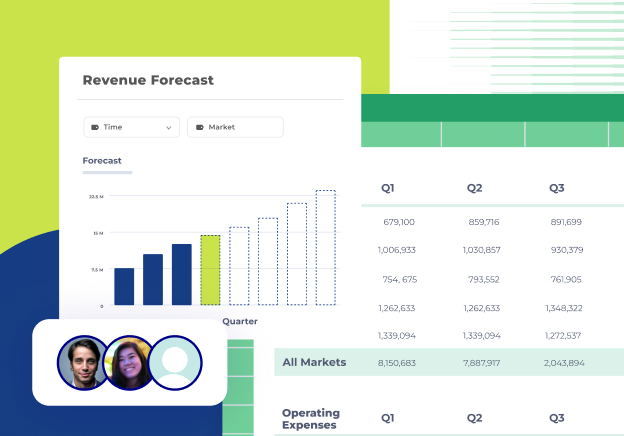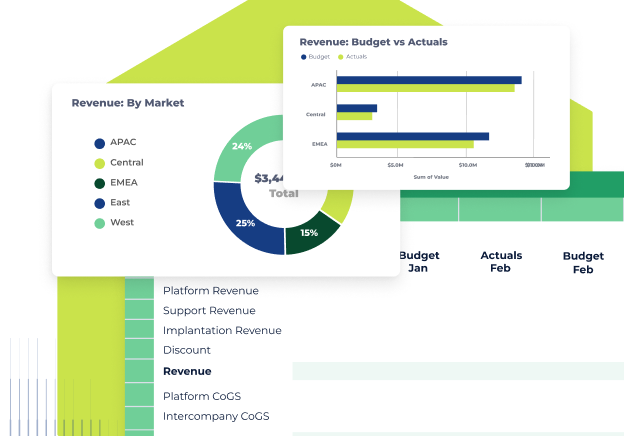What is unearned revenue?
Unearned revenue—also called deferred revenue—is money a company has received in advance for goods or services not yet been delivered or performed.
This type of revenue usually comes from customers who have pre-paid for goods or services that will be fulfilled in the future.
This might include retail stores with layaway options or media companies providing streaming service subscriptions.
The financial concept is essential in accrual accounting, where revenue recognition is not solely based on the exchange of cash but on the fulfillment of the company's obligation to its customer.
By treating payments for undelivered goods or unperformed services as unearned revenue, businesses ensure that their financial statements provide an accurate representation of their financial position and performance.
What are deferred expenses?
On the other side of the coin, we have deferred expenses.
Deferred expenses, also known as prepaid expenses, is when there is payment on a debt owed, but the goods or services associated have not yet been received.
Examples of deferred expenses include:
- Prepaid insurance policies
- Software subscriptions
- Prepaid rent
- Annual service contracts
- Prepaid advertising
Deferred expenses are assets on a company's balance sheet because they are not yet recognized as an expense on the income statement.
They can be used to manage cash flow more efficiently since they’re typically paid in advance of receiving goods or services, which reduces strain on your cash position.
Once the goods or services associated with the deferred expense are received, it’s then transferred from the balance sheet to the income statement as an expense. This approach provides a more accurate reflection of a company's financial position and performance.
Accruals and prepayment: Unearned revenue explained
In accrual accounting, revenue is recognized when it’s earned. But if the money is a prepayment, it doesn’t go on the income statement as recognized revenue.
Therefore, companies must record unearned income to align their income statement and balance sheet.
If a company records income when they receive cash but doesn’t record liabilities for goods or services that have already been sold, the assets and liabilities won’t match up.
Therefore, that revenue is recorded as unearned so that the balance sheet accurately reflects the deferral.
This ensures the financial statements are accurate. It provides a true picture of company financial data used in decision-making.
What if I use cash basis accounting?
Cash basis accounting is an accounting method whereby income and expenses are recognized only when cash is exchanged.
It’s the preferred accounting method for many small businesses and solopreneurs.
In this case, companies don’t need to recognize unearned revenue or liabilities on their income statement, as all transactions are recorded when the cash is exchanged.
How does unearned revenue appear on the three financial statements?
As unearned revenues and expenses affect cash recognition, they are recorded in all three of the financial statements: balance sheet, income statement, and cash flow statement.
Their representation in these three forms changes as revenue moves into and out of the company and shifts from deferred to recognized status.
How does unearned revenue appear on the balance sheet?
The balance sheet, also known as the “Statement of Financial Position,” presents a snapshot of a business's assets, liabilities, and equity.
It helps companies assess their progress, manage risks, and make informed investment decisions. Understanding cash flow is critical, and the balance sheet helps businesses monitor their financial position and liabilities..
Unearned revenue is recorded on the balance sheet as a liability/liabilities, since it corresponds to an obligation that has yet to be fulfilled by the business.
The liabilities section of the balance sheet will record the amount of unearned revenue that has been paid upfront by customers but not yet delivered or services provided.
This amount can vary month-to-month, and so should be updated regularly to reflect true financial data.
How does unearned revenue appear on the income statement?
An income statement, also called a Profit and Loss statement (or P&L) records revenue and expenses over time.
It’s essentially a summary of the business’s financial performance. The income statement includes all revenues from sales and services, minus all costs associated with providing those goods or services—such as cost of goods sold (COGS), depreciation and amortization, salaries, taxes, etc.
This gives you an overview of how much money the company actually made in that period.
Unearned revenue is recorded on the income statement as a deferred income, which is a liability-like account.
When services or products are provided to customers, the deferred revenue is reduced and the corresponding amount of earned revenue is recognized.
The recognition of this earned revenue may occur over time, depending on the terms of the unearned transaction.
As such, it's important to track this data in order to ensure that the income statement accurately reflects your business's financial performance.
How is unearned revenue handled on the cash flow statement?
The cash flow statement is a financial document that shows how cash is generated and used in a business for a specific period.
It includes items such as taxes, investments, and income sources. Management can use it to grasp funds management, while investors can see if the company is generating enough cash to meet its obligations.
Overall, it's a true reflection of a company's financial performance.

Unearned revenue is recorded on the cash flow statement as a "deferred inflow of resources," which is a liability account.
This means that the cash isn't received in the current period, but it's expected to be received in later periods as services are provided or products are delivered. This can result in an increase to the cash account balance during future periods, when customers pay for what they received.
It’s important to track and monitor this data over time to ensure that the cash flow statement properly reflects financial performance.
Impact of Unearned Revenue on Business Planning and Forecasting
For small businesses, especially those operating on thin margins, understanding the future revenue stream is crucial. Unearned revenue, being a significant indicator of future income, plays a pivotal role in both short-term and long-term planning.
- Budgeting & Cash Flow: Recognizing unearned revenue helps businesses anticipate future cash inflow, which is crucial for budgeting. It aids in planning expenditures, ensuring that businesses don't overspend in anticipation of revenue that hasn't been earned yet.
- Risk Management: By monitoring unearned revenue, businesses can identify potential risks. If, for instance, there's a large sum of unearned revenue for a product yet to be launched, and there are production delays, businesses can foresee potential revenue recognition delays.
- Forecasting: For FP&A professionals, forecasting is an everyday task. Unearned revenue offers a tangible metric to project future earnings, especially when patterns of customer prepayments are consistent.
- Decision Making: Having clarity on unearned revenue can influence decisions on investments, expansions, or entering new markets. It serves as a tangible metric of future financial health, making it easier for decision-makers to strategize.
Tools and Best Practices for Tracking Unearned Revenue
In today's digital age, relying solely on manual methods or traditional spreadsheets for tracking unearned revenue can be both time-consuming and error-prone. Here's a look at modern practices and tools that can streamline this process:
Integration with Accounting Software: Tools like QuickBooks, Xero, or Zoho Books often have features or add-ons specifically designed to track and manage unearned revenue, making the process automated and less prone to errors.
Regular Audits: Periodically auditing your unearned revenue accounts ensures accuracy. It helps in identifying discrepancies early, making corrections less cumbersome.
Training: Continual training for the finance team, especially in small businesses, ensures everyone is on the same page regarding the classification and treatment of unearned revenue.
Leveraging Analytics: Modern tools, such as Cube, offer analytics that can provide insights into patterns of unearned revenue. This can be instrumental for FP&A professionals in forecasting and planning.
Unearned revenue examples in the real world
Say your company accepts prepaid subscriptions for a subscription box.
When customers pay in advance, the company records this as unearned revenue on the balance sheet.
Then, when they ship out the paid boxes later in the month, they recognize the revenue on their income statement and reduce liabilities accordingly.
This way, they can accurately reflect the true financial data of their business.
Another unearned revenue example would be using a service, like web hosting services. If you pay for an annual subscription to a web-hosting plan, you’re only using the service a month at a time.
In this case, the revenue is recorded as deferred revenue. As time passes and you use hosting each month, your hosting provider will gradually recognize revenue on its income statement and reduces liabilities accordingly.
What happens if you incorrectly report unearned revenue account?
Unearned revenue reporting requirements are in place to ensure your financial statements always accurately reflect your actual financial position.
If a company fails to accurately record its unearned revenue, it could lead to inaccurate financial reporting and create potential legal issues.
If revenue is improperly recognized, it will report higher profits than actual. Besides the wasted time involved in chasing down and correcting incorrect revenue recognition, it creates issues with meeting the Generally Accepted Accounting Principles (GAAP) standard for financial reporting.
Discrepancies in the cash receipts may lead to issues with your statements of earning, credit rating, and (for publicly traded companies) stock impacts. The Securities and Exchange Commission (SEC) closely monitors reporting to ensure investors have correct information on which to base their decision.
If an issue arises with unearned revenue, it’s important to research and rectify the reports. Follow GAAP rules, consult with your audit team, create any necessary unearned revenue journal entry for correction, and issue updated versions of any impacted financial reports.
Your finance team should review all cash receipts to ensure they are properly allocated to their respective accounts. It’s also important to review internal controls on cash receipt management to ensure accurate accounting procedures are followed each time.
Conclusion: how to report unearned revenue
In wrapping up, understanding unearned revenue is indispensable for businesses aiming for accurate financial reporting.
As businesses evolve and transactions become more intricate, grasping concepts like unearned revenue becomes even more crucial in painting a true picture of an organization's financial health.
This is where the power and flexibility of Cube truly shines.
Cube integrates with your ERP, offering a seamless bridge between tools like Excel and Google Sheets. For FP&A Managers, this means easier reporting, analytics, and forecasting related to unearned revenue.
Ready for a game-changer?
Click the image below to request a free demo and discover how Cube can simplify and streamline your financial reporting process, making unearned revenue management smoother than ever!



.png)









.png)

.webp)


.png)
.webp)
.png)